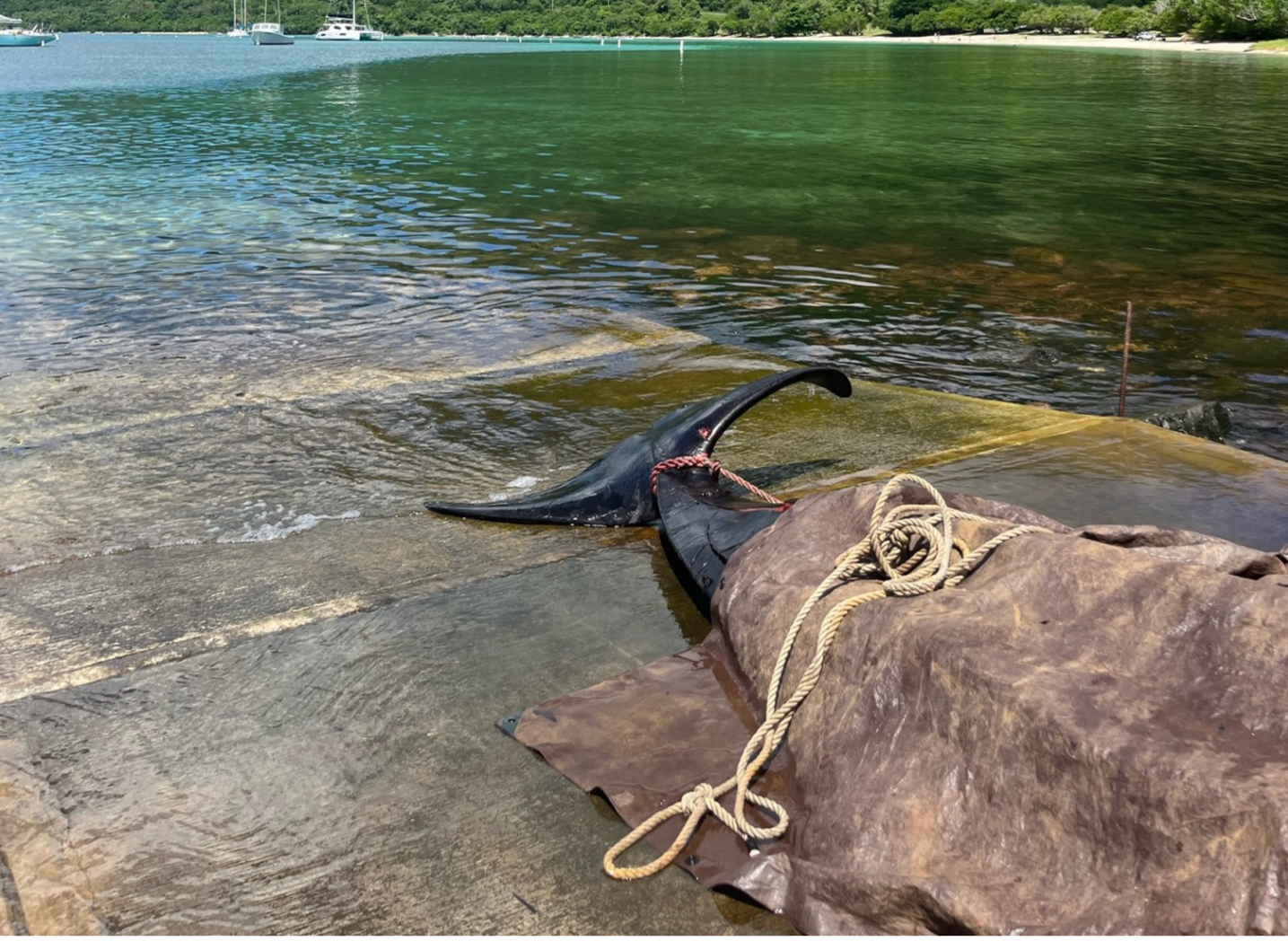
On Tuesday morning, St. John locals discovered an unusual whale species.
The sizable dead animal was recovered and immediately brought to the University of the Virgin Islands for a necropsy. According to animal research experts, the purpose of a necropsy is typically to determine the cause of death or extent of disease. This involves a careful process of dissection, observation, interpretation, and documentation.
While it is believed to be a Cuvier’s Beaked Whale, the definitive confirmation awaits genetic analysis from tissue samples collected during the recovery process. Currently, personnel from the UVI, marine researchers, and students are working to collect tissue samples from the whale.
UVI, well known for its marine biology program, was contacted and promptly reached out to local and federal partners to ensure that all legal protocols were followed. Subsequently, a collaborative effort involving cruise operators, university personnel and marine researchers was initiated to bring the whale to the university for a necropsy.

While it is believed to be a Cuvier’s Beaked Whale, the definitive confirmation awaits genetic analysis from tissue samples collected during the recovery process. Currently, personnel from the UVI, marine researchers, and students are working to collect tissue samples from the whale.
With the whale now in their keeping, researchers have a lot of work to do. This extraordinary discovery has set the stage for unprecedented research and an opportunity to learn more about these elusive creatures.
Moriah Sevier, a coral disease treatment specialist at UVI, explains, “They were tissue samples taken from parts of the whale’s body such as the central portion and the tail so that they can be sent up to federal partners in D.C. and Puerto Rico so that they can do the proper analysis to determine the cause of death.”
Now, to avoid disturbing swimmers or attracting large animals near the shore, the remains of the whale will be transported to another location.
There, nature’s scavengers, including crustaceans and other marine life, will aid in the natural decomposition process, consuming the flesh and soft tissues. Once this process is complete, scientists will retrieve the bones, allowing for a comprehensive study of the specimen.
Sevier further emphasizes the rarity of this discovery. Cuvier’s Beaked Whales are known for their incredible diving abilities, with the capability to reach depths of up to two miles.
Interestingly, Puerto Rico possesses the world’s second-deepest trench, making it a potential habitat for these creatures. Despite their non-rare status in the broader context, encounters with these whales are exceptionally unusual in the region of the USVI..
In fact, this marks the first opportunity for researchers to conduct a necropsy on a stranded whale since the 1990s.
The researchers at the marine dock explained that they hope to “perform a computed tomography (CT) scan on the head to investigate the natural cause of the bruising around the eyes.” Initially, no noticeable propeller scars or external damage were visible.
This procedure will provide insights into the nature and cause of the observed bruising, shedding light on the possible events leading to the whale’s stranding.
This rare find has not only stirred the scientific community but also kindled curiosity among the local population.
The unfolding research promises to deepen the understanding of these deep-diving creatures. As the genetic analysis progresses and the necropsy unfolds, scientists anticipate that this Cuvier’s Beaked Whale will reveal valuable insights into its life, habits, and the unique challenges it faces in the deep waters surrounding the Caribbean.


